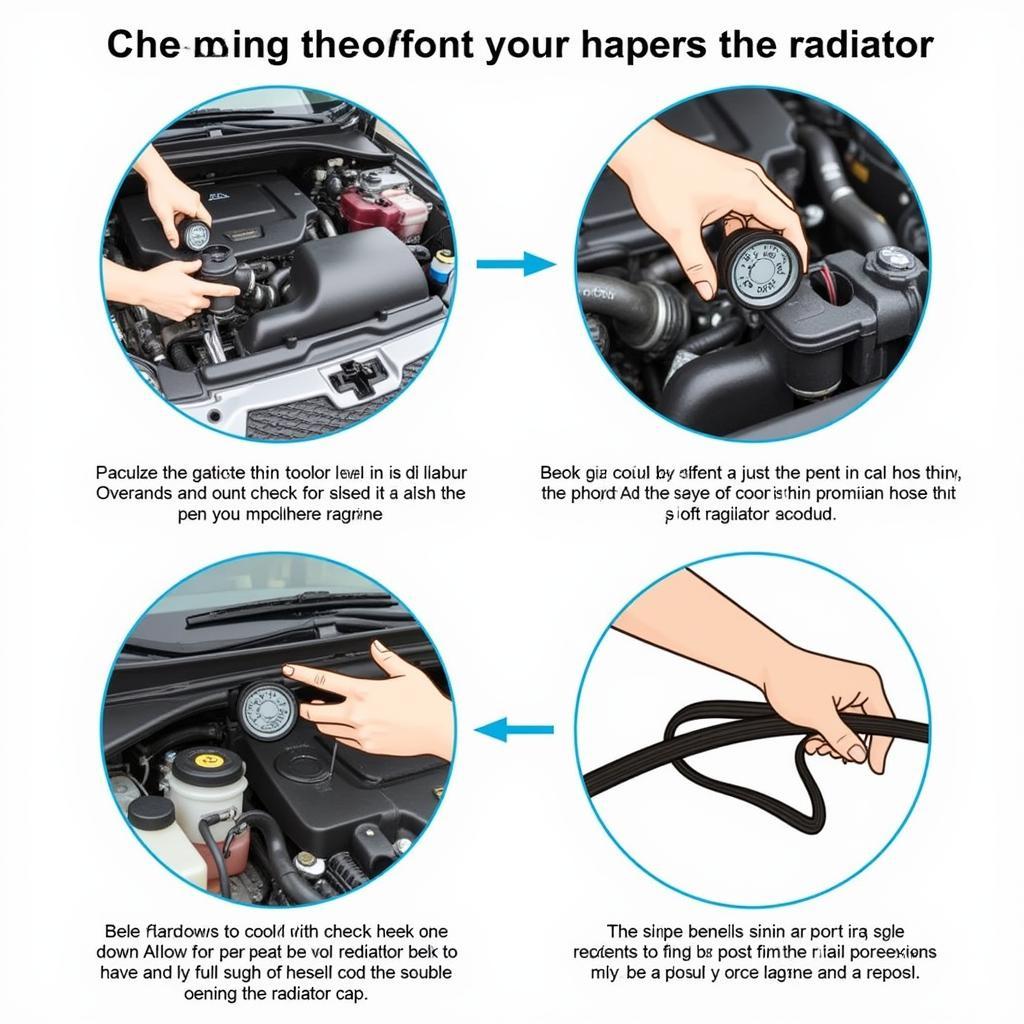A broken car engine can be a frustrating and expensive problem. Whether you’re a seasoned mechanic or a DIY enthusiast, understanding How To Fix A Broken Car Engine is essential. This guide will walk you through common engine problems, diagnostics, and potential solutions to get your car back on the road.
Identifying the Problem: Where to Start When Your Engine is Down
Before you start wrenching, it’s crucial to accurately diagnose the issue. A misdiagnosis can lead to unnecessary repairs and wasted time. So, how do you pinpoint the source of the trouble?
- Listen to your engine: Unusual noises like knocking, ticking, or hissing can indicate specific problems.
- Check the dashboard: Warning lights, such as the check engine light, can provide valuable clues.
- Inspect fluids: Low oil, coolant, or transmission fluid levels can cause serious engine damage.
- Smell for unusual odors: Burning oil or a sweet smell can signal problems with seals or gaskets.
Once you’ve gathered some initial clues, you can move on to more specific diagnostic tests.
Common Car Engine Problems and Solutions
Several common issues can plague car engines. Here’s a breakdown of some frequent culprits and how to address them:
Low Compression
Low compression can cause poor engine performance and starting difficulties. This issue often stems from worn piston rings, damaged valves, or a blown head gasket.
- Perform a compression test: This test measures the pressure in each cylinder and will help confirm low compression.
- Identify the cause: Depending on the results, you may need to replace piston rings, valves, or the head gasket.
Overheating
An overheating engine can lead to warped cylinder heads, cracked engine blocks, and other significant damage.
- Check the coolant level: Low coolant can be a simple fix, but it could also indicate a leak.
- Inspect the thermostat and water pump: A faulty thermostat or water pump can prevent proper coolant circulation.
- Check for leaks: Inspect hoses, radiator, and the water pump for leaks.
 Overheating Car Engine Troubleshooting Tips
Overheating Car Engine Troubleshooting Tips
Knocking Noise
A knocking noise from the engine can indicate several problems, including worn bearings, loose components, or detonation (pre-ignition).
- Determine the source of the knock: Use a mechanic’s stethoscope to pinpoint the location of the noise.
- Address the underlying issue: Depending on the cause, you may need to replace bearings, tighten loose components, or adjust the timing.
Failed Sensors
Modern cars rely heavily on sensors to control engine functions. A faulty sensor can trigger various issues and activate the check engine light.
- Use a diagnostic scanner: A scanner can retrieve error codes related to faulty sensors.
- Replace the faulty sensor: Once you’ve identified the bad sensor, replacing it is usually a straightforward process.
“A thorough diagnostic process is paramount when tackling engine problems,” says automotive expert, Robert Johnson, ASE Certified Master Technician. “Jumping to conclusions can lead to wasted time and money.”
How to Fix a Broken Car Engine: A Step-by-Step Approach
Fixing a broken car engine often requires a systematic approach:
- Gather your tools and materials: Make sure you have the necessary tools, replacement parts, and safety equipment.
- Disconnect the battery: This is crucial for safety.
- Access the affected component: Remove any necessary components to reach the part you need to repair or replace.
- Repair or replace the component: Follow the appropriate repair procedures for the specific problem you’re addressing.
- Reassemble the engine: Carefully reassemble all components and ensure everything is properly connected.
- Reconnect the battery: Once everything is back together, reconnect the battery.
- Test the engine: Start the engine and check for any remaining issues.
 Car Engine Repair Step-by-Step Guide
Car Engine Repair Step-by-Step Guide
Conclusion: Getting Your Car Back on the Road
Fixing a broken car engine can be challenging, but with the right knowledge and approach, it’s often manageable. Remember to prioritize proper diagnostics, follow recommended repair procedures, and consider seeking professional help if needed. How to fix a broken car engine can involve various complex steps, but this guide provides a solid starting point. If you need further assistance, feel free to connect with us at AutoTipPro. Call us at +1 (641) 206-8880 or visit our office at 500 N St Mary’s St, San Antonio, TX 78205, United States.
“Sometimes, the best way to fix a broken car engine is to seek professional advice,” advises Sarah Miller, Lead Mechanic at Miller’s Auto Repair. “A qualified mechanic can save you time and prevent further damage.”
FAQ
- What are the most common signs of a broken car engine? Unusual noises, warning lights, fluid leaks, and performance issues can indicate engine problems.
- How much does it cost to fix a broken car engine? The cost can vary significantly depending on the extent of the damage and the type of engine.
- Can I fix a broken car engine myself? Some engine repairs can be done DIY, but others require specialized tools and expertise.
- How can I prevent engine problems? Regular maintenance, including oil changes and fluid checks, can help prevent many engine issues.
- What should I do if my check engine light comes on? Have the engine diagnosed by a mechanic as soon as possible.
- How do I know if my engine needs a rebuild? Low compression, excessive oil consumption, and persistent knocking are often signs that an engine rebuild is needed.
- What is the difference between engine repair and engine replacement? Repair involves fixing specific components, while replacement means installing a new or remanufactured engine.




Leave a Reply